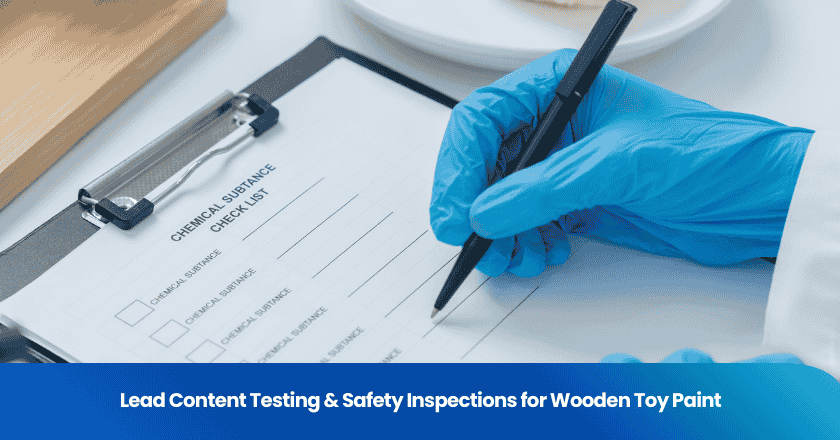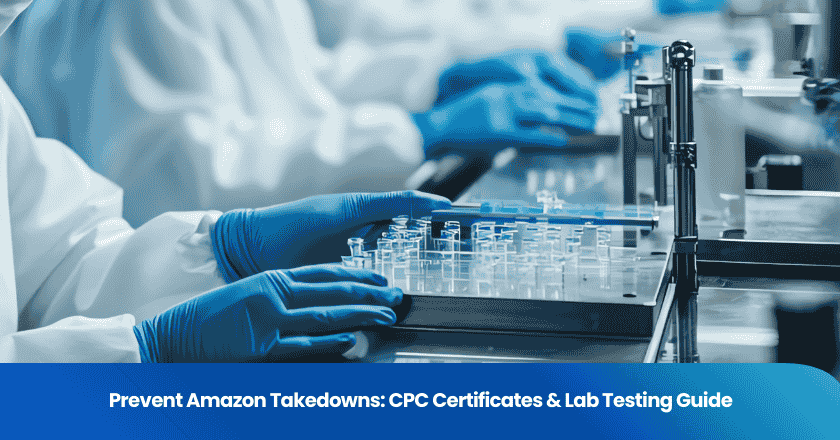
Effective apparel testing and quality control in 2025 requires a shift toward data-driven systems and real-time monitoring. Companies modernize quality control by adopting digital tools, automated inspections, and clear benchmarks. They see strong results when teams focus on modernizing quality control and use technology to streamline processes. Apparel testing and quality control now depend on setting clear standards and using smart analytics. Organizations that modernize quality control achieve fewer defects and higher customer satisfaction. Modernizing quality control also encourages team collaboration and faster response to issues.
Key Takeaways
• Start by assessing your current apparel testing processes to find gaps and improve quality.
• Set clear quality standards and share them with your team and suppliers to ensure consistency.
• Use technology like real-time dashboards and automated inspections to catch defects early and speed up production.
• Follow standardized protocols and use checklists to keep inspections thorough and consistent.
• Train your staff regularly and encourage continuous feedback to maintain high quality and solve problems quickly.
Apparel Testing and Quality Control Steps
Assess Current Processes
The textile industry relies on strong quality control to maintain product consistency and meet customer expectations. Companies begin by evaluating their current apparel testing and quality control systems. They review each stage of production, from raw textile selection to final garment inspection. This assessment helps identify gaps in quality and highlights areas where manufacturing processes can improve.
A thorough review includes checking documentation, analyzing defect rates, and comparing results to industry standards. Teams often use benchmarking to measure their performance against leaders in the textile industry. This process ensures that every step in production aligns with best practices. Regular assessment supports continuous improvement and helps companies adapt to new challenges in manufacturing.
Tip: Use checklists and flowcharts to visualize each step in the production process. This makes it easier to spot weaknesses and track improvements over time.
Set Quality Standards
Setting clear standards forms the foundation of effective apparel testing and quality control. The textile industry uses international and regional standards to define acceptable levels for fabric strength, colorfastness, and seam durability. Companies must document these standards and communicate them to all team members involved in production.
Quality standards guide every inspection and test during manufacturing. They help ensure that each textile product meets the same level of quality, regardless of batch or supplier. Teams use these standards to create detailed inspection protocols and testing schedules. This approach reduces the risk of defects and supports product consistency across all production runs.
A table can help organize key standards for easy reference:
| Standard Type | Description | Application in Production |
|---|---|---|
| Fabric Strength | Minimum tensile strength required | Raw material selection |
| Colorfastness | Resistance to fading or bleeding | Dyeing and finishing stages |
| Seam Durability | Stitch quality and strength | Assembly and final inspection |
By following these standards, companies in the textile industry can maintain high quality and meet regulatory requirements.
Align Teams and Suppliers
Alignment between internal teams and external suppliers is essential for successful apparel testing and quality control. The textile industry depends on clear communication to ensure everyone understands the required standards and inspection procedures. Companies hold regular meetings and training sessions to keep all parties informed about updates in quality requirements.
Suppliers play a key role in maintaining product consistency. They must follow the same quality standards as the main manufacturing facility. Companies often share detailed guidelines and conduct joint inspections to verify compliance. This collaboration reduces misunderstandings and helps prevent quality issues before they reach the final stages of production.
Note: Open communication channels and regular feedback sessions help teams and suppliers resolve problems quickly. This approach supports continuous improvement and strengthens relationships across the textile supply chain.
Strong alignment leads to fewer defects, smoother production, and higher satisfaction for both manufacturers and customers. The textile industry thrives when everyone works toward the same quality goals.
Quality Control in Garment Manufacturing
Quality control in garment manufacturing forms the backbone of the textile industry. Every stage of production requires careful attention to detail. Companies in textile garment manufacturing use systematic procedures to ensure product consistency and high quality. The process begins before production starts and continues until the final product leaves the facility.
Pre-Production Checks
Pre-production checks set the stage for successful garment manufacturing. Teams in the textile industry start by reviewing raw materials. They inspect fabric rolls for flaws, measure color accuracy, and test for shrinkage. Pre-production sample approval plays a vital role at this stage. Teams compare samples to approved standards, checking for alignment with customer requirements.
Production teams also review technical specifications. They confirm that patterns, trims, and accessories meet quality standards. Pre-production sample approval ensures that the first batch matches expectations. This step helps prevent costly mistakes later in production. Quality control in garment manufacturing relies on these early checks to catch issues before they escalate.
Tip: Use a checklist for each pre-production inspection. This helps teams track every detail and maintain product consistency.
In-Line Inspections
In-line inspections take place during production. Inspectors monitor each stage of garment manufacturing, from cutting to sewing and finishing. They look for defects such as uneven stitching, incorrect labels, or fabric damage. Quality control teams use real-time data to identify trends and address problems quickly.
Production lines benefit from frequent quality inspection points. Inspectors check random samples and document findings. This approach allows teams to correct errors before they affect large quantities. In-line inspections support product consistency and reduce the need for rework. Textile garment manufacturing facilities often use digital tools to record inspection results and share feedback with production staff.
The textile industry values clear communication during in-line inspections. Teams discuss issues openly and work together to solve problems. This collaboration leads to better quality and fewer delays in production.
Post-Production Audits
Post-production audits serve as the final checkpoint in quality control in garment manufacturing. Auditors review finished garments for compliance with quality standards. They check measurements, stitching, color, and packaging. Post-production audits include lab testing for colorfastness, durability, and safety.
Production teams document every audit. They use detailed reports to track defect rates and identify recurring issues. Quality control in garment manufacturing depends on accurate records. These documents help companies improve future production runs and maintain product consistency.
Defect reporting plays a key role in post-production audits. Teams log every issue and analyze root causes. This process supports continuous improvement and reduces rework. The textile industry relies on strong documentation to meet regulatory requirements and customer expectations.
Note: Regular post-production audits help companies in textile garment manufacturing maintain high quality and build trust with customers.
Quality control in garment manufacturing involves a cycle of inspection, documentation, and improvement. Each step, from pre-production sample approval to final audits, supports the goal of delivering consistent, high-quality textile products. The textile industry thrives when teams focus on systematic quality control and open communication throughout production.
Technology Integration
Real-Time Dashboards
Real-time dashboards have become essential for companies that want to modernize quality control in apparel manufacturing. These dashboards display live data from every stage of production. Teams can see updates on fabric defects, production speed, and quality inspection results as they happen. This immediate access to information helps managers make quick decisions. They can spot trends, address issues, and prevent defects before they reach the next stage.
Dashboards also support collaboration. When teams share the same data, they work together to solve problems. This approach improves quality and reduces delays. Real-time dashboards help companies modernize quality control by making information visible and actionable. They encourage a culture of transparency and accountability.
Tip: Use color-coded alerts on dashboards to highlight urgent quality control issues. This helps teams respond faster and maintain high quality standards.
Automation and Data Analytics
Automation and data analytics play a major role in modernizing quality control. Automated quality inspection systems use cameras and sensors to check garments for defects. These systems work faster than manual checks and reduce human error. Automated quality inspection also provides consistent results, which supports product reliability.
Data analytics tools analyze large amounts of quality data. They identify patterns in defects, track performance, and suggest areas for improvement. Teams use these insights to modernize quality control processes. They can adjust production methods, train staff, and set new quality benchmarks. Automation and analytics help companies achieve higher quality and fewer defects.
A table can show the benefits of automation and analytics:
| Benefit | Impact on Quality Control |
|---|---|
| Faster Inspections | Reduces production delays |
| Consistent Results | Improves product reliability |
| Data-Driven Decisions | Supports continuous improvement |
Modernizing quality control with technology leads to better products and greater customer satisfaction. Companies that invest in these tools stay ahead in the competitive apparel industry.
Quality Control Tools
Standardized Protocols
Standardized protocols form the backbone of effective apparel testing. Teams in the textile industry rely on clear procedures to maintain high quality. These protocols outline every step in the inspection process. They define the exact methods for measuring fabric strength, checking seam durability, and verifying colorfastness. By following these protocols, teams ensure that every garment meets strict standards.
Protocols also help teams train new staff. When everyone uses the same procedures, results stay consistent. This consistency supports compliance with industry standards. Teams update protocols regularly to reflect new regulations or changes in production methods. Written protocols reduce confusion and help teams avoid mistakes. They also make it easier to audit processes and prove compliance with quality standards.
Tip: Store all protocols in a shared digital folder. This ensures that every team member can access the latest version and follow the correct standards.
QC Charts and Checklists
QC charts and checklists provide practical tools for tracking quality during production. Teams use charts to record inspection results and monitor trends over time. These charts highlight areas where defects occur most often. By reviewing this data, managers can adjust processes and improve overall quality.
Checklists guide inspectors through each step of the testing process. They list all required checks, such as measuring garment dimensions or inspecting stitching. Inspectors mark each item as they complete it. This method ensures that no step gets missed. Checklists also help teams meet all required standards for each product.
A simple checklist might include:
• Fabric inspection for flaws
• Measurement of garment size
• Seam strength testing
• Colorfastness verification
• Packaging review
Using charts and checklists supports a culture of accountability. Teams can quickly identify problems and take corrective action. These tools help maintain high standards and deliver consistent quality in every batch.
Team Training and Improvement
Staff Training
Staff training stands as a critical factor in maintaining high quality in apparel manufacturing. Teams receive regular instruction on inspection techniques, safety protocols, and the latest industry standards. Trainers use hands-on demonstrations to show how to spot defects and measure garment specifications. New employees often shadow experienced inspectors to learn best practices.
A structured training program helps every team member understand their role in the quality process. Managers schedule refresher courses to keep skills sharp and introduce new testing methods. Training sessions often include real-life scenarios, so staff can practice solving common quality issues. This approach builds confidence and ensures that everyone follows the same procedures.
Tip: Create a training checklist for each role. This ensures that all staff members receive consistent instruction and understand the expectations for quality.
Continuous Feedback
Continuous feedback drives improvement in quality control systems. Supervisors observe staff during inspections and provide immediate guidance. Teams hold short daily meetings to discuss recent quality results and share solutions for any problems found. This routine keeps everyone focused on quality goals.
Feedback does not only come from supervisors. Peer reviews encourage team members to support each other and share tips for better inspection. Companies use digital platforms to collect feedback and track progress over time. These records help managers identify trends and adjust training as needed.
A simple feedback loop might include:
1. Inspect garments and record results.
2. Review findings with the team.
3. Suggest improvements and update procedures.
4. Monitor changes and celebrate progress.
This cycle helps teams maintain high quality standards and adapt quickly to new challenges. Continuous feedback creates a culture where everyone feels responsible for quality and improvement.
Effective apparel testing and quality control in 2025 depend on several key actions:
• Assess current processes and set clear quality standards.
• Align teams and suppliers for consistent results.
• Use technology like real-time dashboards and automation.
• Apply standardized protocols and practical tools.
• Train staff and encourage continuous feedback.
Ongoing review and expert advice help teams stay ahead. Modernizing quality control leads to better products and higher customer trust. Start updating your approach today to achieve lasting success.
FAQ
What is the purpose of pre-production sample approval?
Pre-production sample approval helps teams check if the first batch matches the required standards. This step allows the textile industry to catch problems early and ensures product consistency before full production begins.
How does automated quality inspection improve manufacturing?
Automated quality inspection uses cameras and sensors to find defects quickly. This technology reduces human error and speeds up production. Teams in garment manufacturing rely on automation to modernize quality control and maintain high standards.
Why is product consistency important in the textile industry?
Product consistency ensures every item meets the same quality. The textile industry values this because it builds customer trust and reduces returns. Consistent products also help companies follow regulations and improve their reputation.
What role do standards play in quality inspection?
Standards guide every quality inspection. They define what teams should check during production. Following clear standards helps the textile industry maintain high quality and meet customer expectations.
How can teams modernize quality control in textile garment manufacturing?
Teams modernize quality control by using real-time dashboards, automation, and data analytics. These tools help track defects, improve manufacturing processes, and support continuous improvement in textile garment manufacturing.
Grow your business with TradeAider Service
Click the button below to directly enter the TradeAider Service System. The simple steps from booking and payment to receiving reports are easy to operate.



